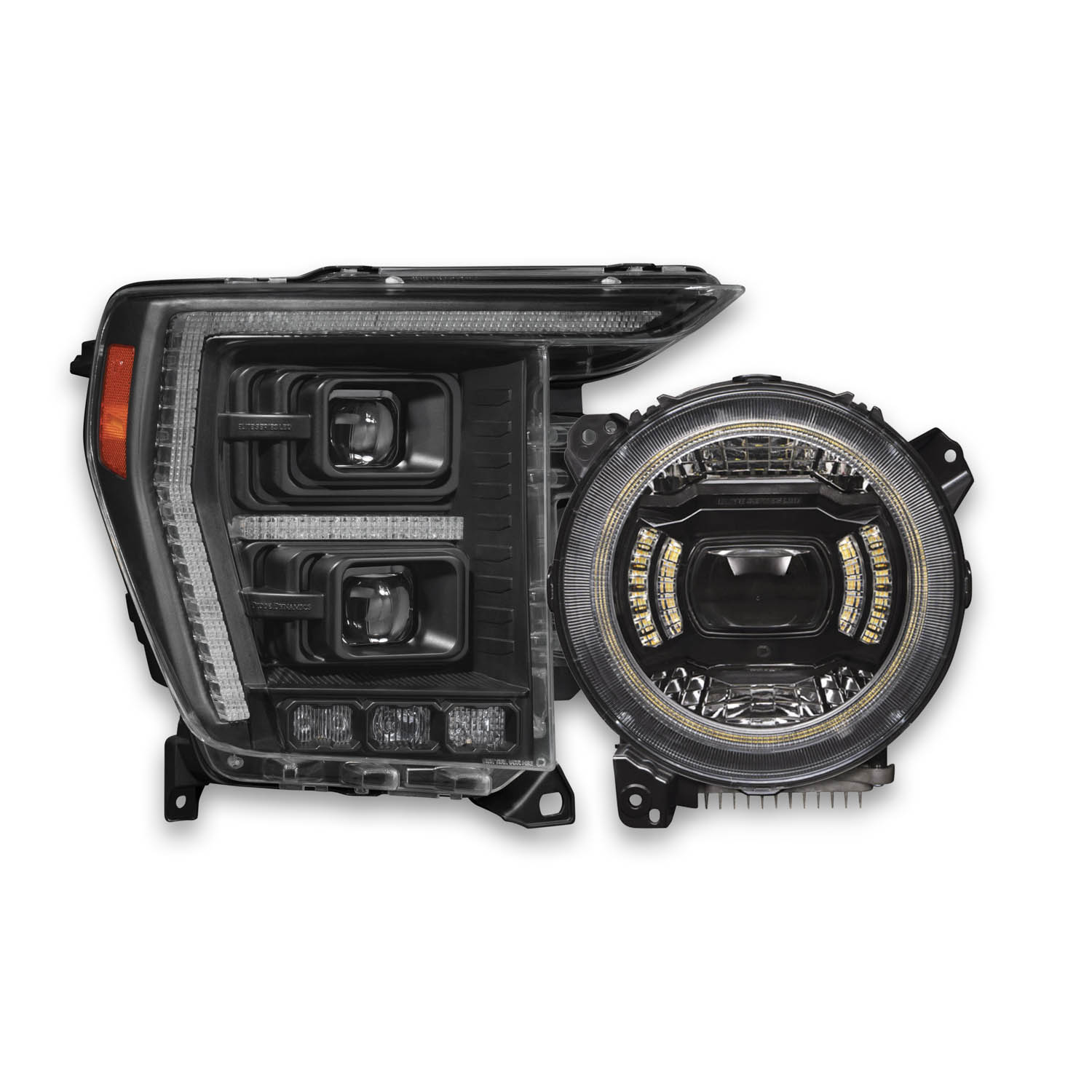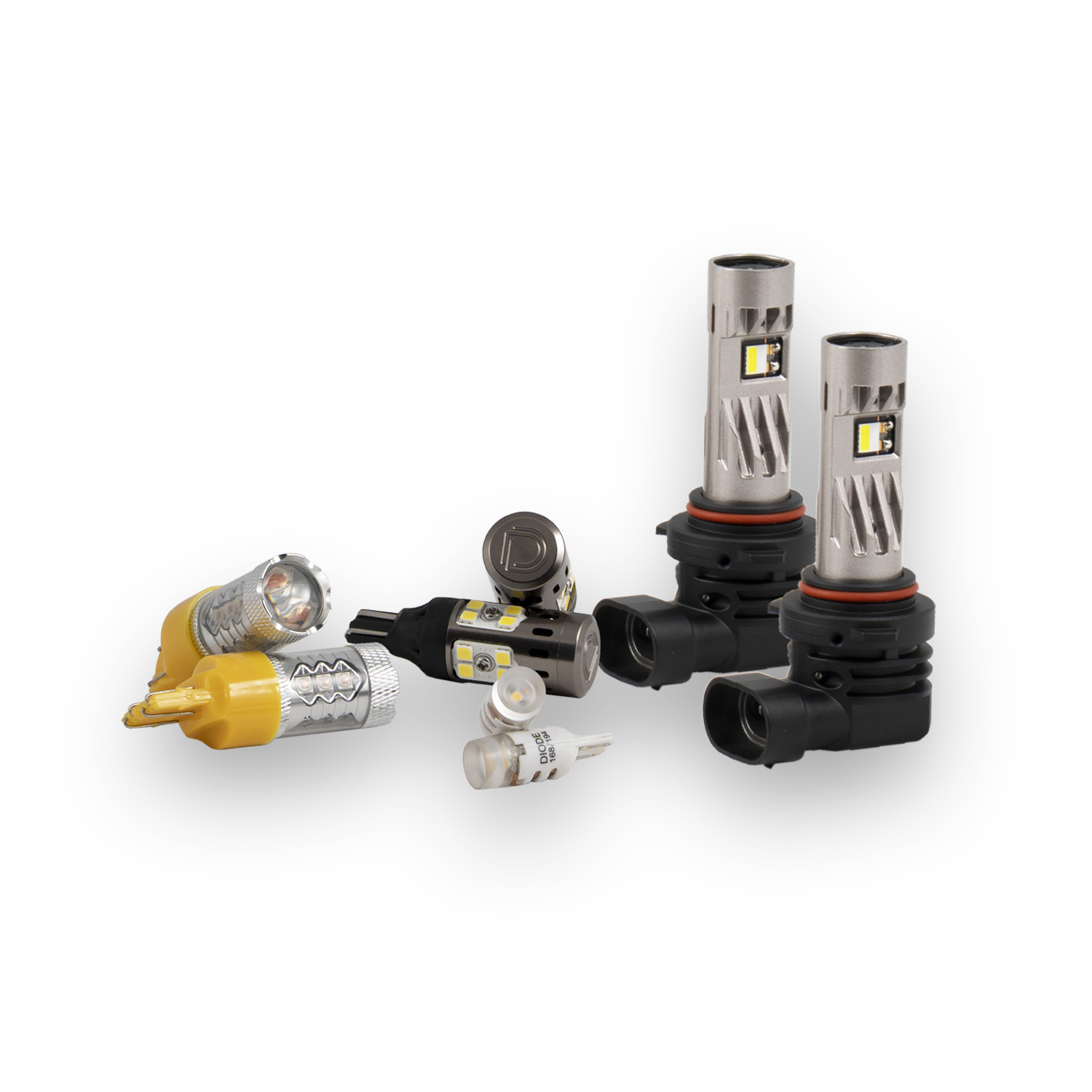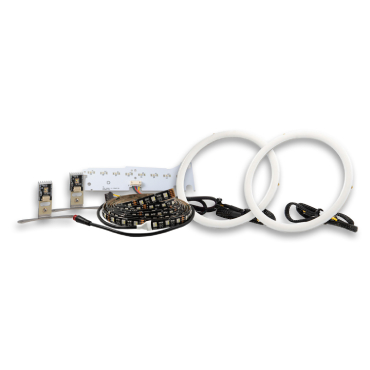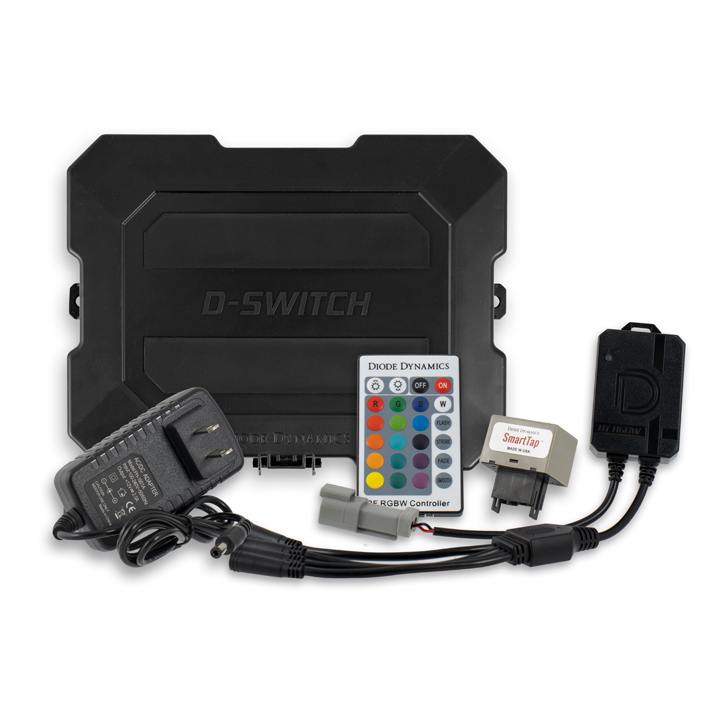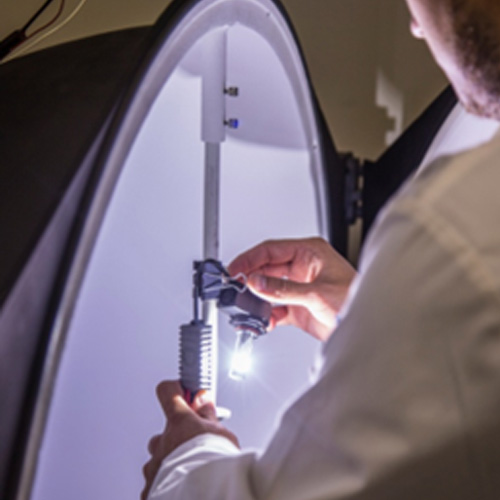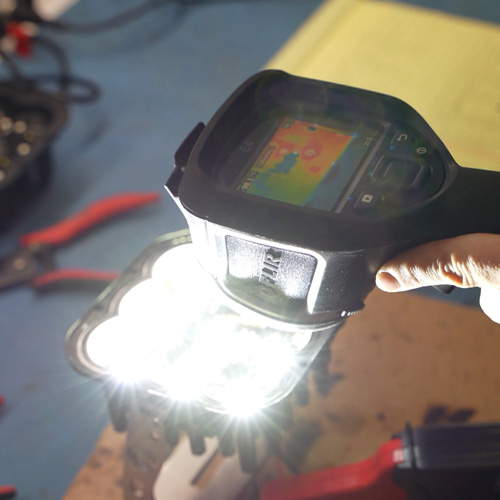LED Technology
A light-emitting diode (LED) is a semiconductor light source. LEDs are used as indicator lamps in many devices and are increasingly used for other lighting as their brightness increases. Introduced in 1962, early LEDs emitted low-intensity red light, but modern versions are available across visible, ultraviolet, and infrared wavelengths, with very high brightness levels.
All LEDs have at least one anode, or positive lead, and one cathode, or negative lead. Sometimes there is more than one in order to accommodate dual colors or multiple chips in one LED package. There is always a flat spot or notch to denote the cathode side. The anode is connected to the post, and the cathode is connected to the anvil, which holds semiconductor die, where the light is actually produced.
When a light-emitting diode is switched on, electrons are able to recombine with electron holes within the device, releasing energy in the form of photons, or light. This effect is called electroluminescence, and the color of the light is determined by the energy gap of the semiconductor. Integrated optical components may be used to shape the radiation pattern of the light. LEDs have many benefits compared to standard light sources, including lower energy consumption, longer life, improved physical robustness, smaller size, and faster on/off switching.
To use LEDs in automotive applications, multiple LED chips are designed into a bulb assembly, and wired in order to provide the necessary voltage and current to run the bulbs reliably. The use of LED can provide longer-lasting, brighter, more reliable bulbs when compared to standard bulbs.
Color
LEDs are designed to emit specific wavelengths of light, which is interpreted as different colors by the human eye. This is determined by the material that makes up the p-n junction on the LED, where the electrons jump and emit photons of light. The most common materials used are AlGaInP and InGaN. There is no actual "white" color wavelength, so to create white light, a blue LED is topped with a material that emits yellow wavelengths, the combination of which produces a white color to the human eye. This is why most white LEDs have a yellow color when they are off.
Automotive LEDs are offered in many different colors. When shopping for LED bulbs for your exterior, be sure to check your state's laws on colored bulbs in your vehicle. Many states do not allow for colored bulbs on the exterior of the vehicle, such as the licence plate lights. It is also important to purchase the bulb color that matches the color of your housing to allow for the effective transmission of the proper color wavelength through the reflector. For example, if your sidemarker has an amber housing, you would want to purchase an amber bulb, not a white bulb.

Types of LEDs
Traditional LEDs:
Traditional LEDs are usually available in 3mm, 5mm, and 10mm which denotes the size of the LED in diameter. These older types of LEDs are typically used where size and brightness are not as important, such as indicator lights or automotive gauges. Traditional LEDs usually have a rounded half-circle top, which focuses the light forward. This is sometimes called "bullet" or "normal". They are also available with a flat top, which disperses the light forward. Finally, they are available in an inverted design, which disperses the light in all directions. The LED design varies by the application, since each design has a different light output effect. To make it easier to identify them, many manufacturers use colored bulb bases whenever possible. These traditional LEDs last a long time, but are prone to failure when too little or too much power is used. They are also the least bright type of LED, and have been replaced with newer technologies for most applications.
SMD LEDs:
Suface-mount technology (SMT) is a method for constructing electronic circuits in which the components are mounted directly onto the surface of the printed circuit boards (PCBs). The electronic device produced in this method is called a suface-mount device (SMD). In the industry, SMT has largely replaced the through-hole technology construction method of fitting components with wire leads into holes in the circuit board. An SMT component is usually smaller than its through-hole counterpart; the anodes and cathodes are completely flat. A difference in SMD LEDs versus standard ones is the number of light sources, sometimes called "chips". The highest quality is 3-chip, for which there are 3 anodes and 3 cathodes on each individual SMD chip. Effectively, each 3-chip LED is actually 3 LEDs, in one "package."
These SMD LEDs have quickly replaced traditional LEDs in almost every automotive bulb application, due to their smaller size in relation to the amount of light output. Similar to traditional LED-bulbs, most manufacturers use a colored bulb base to more-easily identify the color of the bulb. SMD LEDs last a very long time, but are prone to failure if too little or too much power is used, and they require a higher level of construction quality in order to ensure all soldering is perfect- since the connection points on the LED are much smaller, it's much easier to make a mistake compared with older LEDs. As they are higher in brightness, SMD LEDs also produce more heat in operation, requiring proper design to ensure longevity.
Hi-Power LEDs:
The newest type of LEDs are known as high-power LEDs. These LEDs are the same technology as an SMD type LED, but are thicker, allowing for greater current, and more light. These are usually described in terms of the maximum power dissipation, in watts. These chips can vary in size and shape. Commonly, high-power LEDs will be referred to as "Cree" LEDs, as Cree, Inc., a U.S. manufacturer of LED chips, was the first company to make high-power LEDs widely available. Now, all high-power LEDs that use the general design are known as Cree LEDs, but be aware that there are many suppliers that describe their bulbs as "Cree" but do not actually use the highest-quality, genuine Cree-brand chips.
By combining different high-power LED chips of varying sizes, the overall bulb is rated by the total power rating. For example, the 11W bulb uses four 1.5W chips and one 5W chip, for a total of 11W. With the proper and correct design, hi-power LEDs can last for a very long time. However, the bulbs produce more heat than any other type of LED, so the design is critical to prevent overheating. Usually these LEDs use aluminum housings for heat dissipation.
For more information on the design of LEDs, visit our LED Design page.
Resistance and Hyperblinking
Since LED bulbs use considerably less power than halogen and incandescent bulbs, they put less load on the vehicle's electrical system. While saving energy is generally a good thing, minimal problems can arise. The vehicle expects a certain amount of power to be used on the circuit. If you have a factory bulb, and less power is being used than normal, it usually means that the bulb has gone out. In all vehicles, by law, the turn signal flasher is designed to blink at a faster speed when this happens, to alert the driver of the malfunction. When LEDs are installed as a replacements, the vehicle senses much less power being used, thinks the factory bulb is out, and starts blinking at a faster speed. This is known as "hyperblink". It does not damage the LED bulb at all, and it is OK to let it hyperblink, but it can be corrected if desired. It can be corrected in two ways:
Flasher Module Replacement. The turn signal is controlled by a flasher module. Many vehicles use a standard-sized removable flasher module, which can be replaced by an LED flasher module, which is designed to blink at a regular speed with the lower power consumption of LEDs. This method is a simple, plug-and-play fix, which should be used whenever possible due to the ease of installation. However, many newer vehicles have the flasher module built into the vehicle's BCM (computer), so it cannot be replaced.
Resistors. A universal fix for all vehicles is to add resistors to the circuit. Resistors can be connected in parallel to the turn signal power and ground wires, to use additional power on the circuit. This makes the vehicle think a factory bulb is being used again, and will cause the turn signal to blink at a regular speed. Diode Dynamics provide 6-ohm resistors, which will draw two amps of power in a standard circuit, to replicate one bulb. So, if you replace front and rear bulbs with LEDs, you will probably need to use a resistor for each bulb, or four total. Since resistors convert power to heat, they get hot during operation, so they should not be mounted onto any soft plastic. Resistors should be installed so that they are hanging freely, or only touching metal surfaces.
Replacing Dual-Filament Bulbs with LED
In selecting LEDs for automotive use, you must replicate the function of the original bulb. A filament is a source of light in a standard light bulb. There are single-filament and dual-filament incandescent bulbs. Most LED bulbs could be described as "single filament," meaning there is only one brightness level, the bulb can only be completely on, or off. There are some LED bulbs which are designed to replace dual-filament incandescent bulbs through power regulation, and they are able to come on at two brightness levels, usually half-power and full-power. We call these "dual filament" LEDs for ease of reference, as they are intended to replace dual-filament incandescent bulbs. Dual filament LEDs are typically used in the tail light application: you may notice that when you turn your vehicle's parking lights on, the tail lights light up one filament and come on half power. When you push the brake, the tail lights light up both filaments and come on full power. Dual filament bulbs will always require at least three wires; one negative, and two positive.
A specialty LED bulb design known as the "switchback bulb" makes special use of the dual filament three-wire system. This bulb is used in the front turn signal application. When the parking light is activated, the "parking light" wire make the bulb lights up white, and when the turn signal is activated, the LED bulb flashes amber.
Polarity
Standard halogen or incandescent bulbs do not require specific polarity, meaning the power and ground side of the bulb do not matter. The direction that the bulb is installed will not effect whether the bulb powers on. With LED technology, specific polarity is usually required, so the bulb must be installed in the correct direction. If the bulb does not work the first time it is installed, flip the bulb around 180 degrees in the socket.
Many bulbs on the market are designed with the most common polarity configurations. However, since polarity does not matter for halogen bulbs, some manufacturers are inconsistent with standard polarity configuration in the connectors. For example, we are aware of an issue in the 2010 Kia Forte where one fog light connector is wired incorrectly. In this situation, the LED bulbs will not work correctly when installed, because the polarity is incorrect. Unfortunately, sometimes the bulb cannot be flipped, because some connector types can only connect to the socket one way. In this situation, the wires in the connector on the vehicle need to be switched from one side to the other, which is a simple process we can assist you with. Note that manufacturer errors such as this are extremely rare, so it is not generally something to worry about when purchasing LED bulbs.
Dimming
In dimmer circuits, all Diode Dynamics LEDs will dim off, just like the factory bulbs do. However, there is sometimes a very small amount of power, only a few milli-amps, left in the circuit once the vehicle has dimmed the lights completely. Since regular bulbs use a lot of power, it is not nearly enough to light them up at all, and the power is wasted. But since LEDs use much less power to turn on, this residual power can make them illuminate, making them glow slightly when they are supposed to be all the way off. This is not using any more power than your factory bulb, it is just using the wasted power in the circuit. Your factory bulb used this excess power without visibly lighting up.

